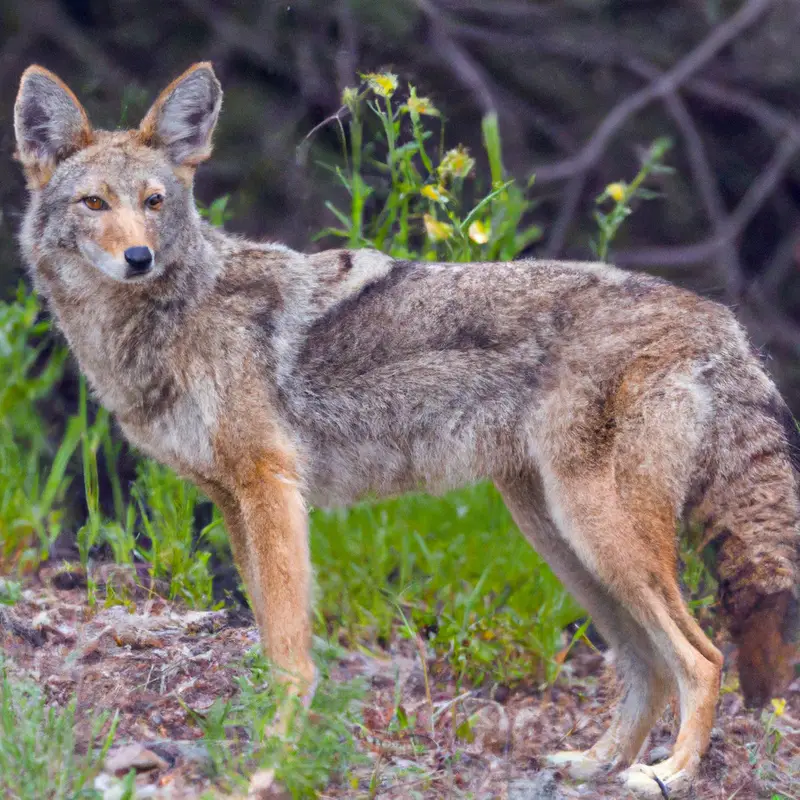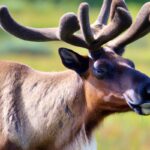Key Takeaways:
- Coyote hunting in Alaska requires specialized skills and knowledge of their behavior and habitat.
- Coyotes are a resilient and adaptable species that can thrive in harsh, remote environments.
- Alaska’s vast and diverse landscapes provide ample opportunities for coyote hunting.
- Successful coyote hunting in Alaska often involves employing various techniques such as calling, stalking, and baiting.
Imagine being surrounded by the untamed wilderness of Alaska, the crisp winter air filling your lungs as you embark on a thrilling adventure: hunting the elusive and cunning coyote. It’s a battle of wits and skill, where every step and decision could mean the difference between success and failure.
But before you set foot on this challenging journey, it’s crucial to understand the world of the coyote in Alaska – their population, habits, and predatory nature.
In this article, I will guide you through the regulations, gear, techniques, and ethical considerations for an unforgettable coyote hunting experience in the Last Frontier. So, let’s dive into the wild and explore the exhilarating world of hunting coyotes in Alaska!
Aspect | Information |
Location | Alaska |
Season | Winter (October to February) |
Method | Trapping and Snaring, Aerial Hunting, Predator Control Programs |
License | Alaska resident hunting licenses and nonresident hunting licenses are available. Coyote trapping and snaring require additional permits. |
Limits | No limit for bagging coyotes in Alaska. |
Clothing & Gear | Cold-weather clothing, snowshoes, appropriate firearms, predator calls, binoculars, and tracking equipment. |
Regulations | Follow Alaska Department of Fish and Game (ADF&G) regulations for hunting coyotes. |
Precautions | Be familiar with the local wildlife, carry bear spray for safety, and inform others of your hunting plans. |
Understanding the Coyote in Alaska
Coyote Population in Alaska
The coyote population in Alaska is thriving.
These adaptable creatures have successfully expanded their range across the state, including urban areas.
They are known for their ability to adapt to various habitats and food sources, making them highly resilient.
The coyote population plays an important role in the ecosystem by controlling rodent populations and serving as prey for larger predators.
It’s crucial to remember that coexistence with these animals is possible, but precautions should be taken to prevent conflicts, such as securing trash and keeping small domestic animals supervised.
Coyote Habits and Behavior in Alaska
Coyotes in Alaska have adapted to their environment by displaying certain habits and behaviors. They are highly adaptable and can survive in various habitats, from forests to urban areas.
Coyotes are most active during dawn and dusk, known as crepuscular behavior, and can be seen hunting for food during these times.
They are opportunistic hunters and scavengers, feeding on small mammals, birds, and carrion. Coyotes are known for their vocalization, including howling, yipping, and barking, which helps them communicate and establish territory.
They are also social animals, living in small family groups called packs.
In Alaska, coyotes are a resilient and resourceful species, able to thrive despite the challenging conditions of their environment.
Coyote as a Predatory Species in Alaska
Coyotes are predatory species found in Alaska.
They play an important role in the ecosystem by helping to control populations of small mammals, such as rabbits and rodents.
They are adaptable creatures and can thrive in various environments, including urban areas.
Coyotes are skilled hunters and have been known to prey on a variety of species, including small mammals, birds, and even larger prey like deer.
They are known for their intelligence and ability to work together in packs to hunt.
Coyotes have a significant impact on the balance of wildlife populations in Alaska.
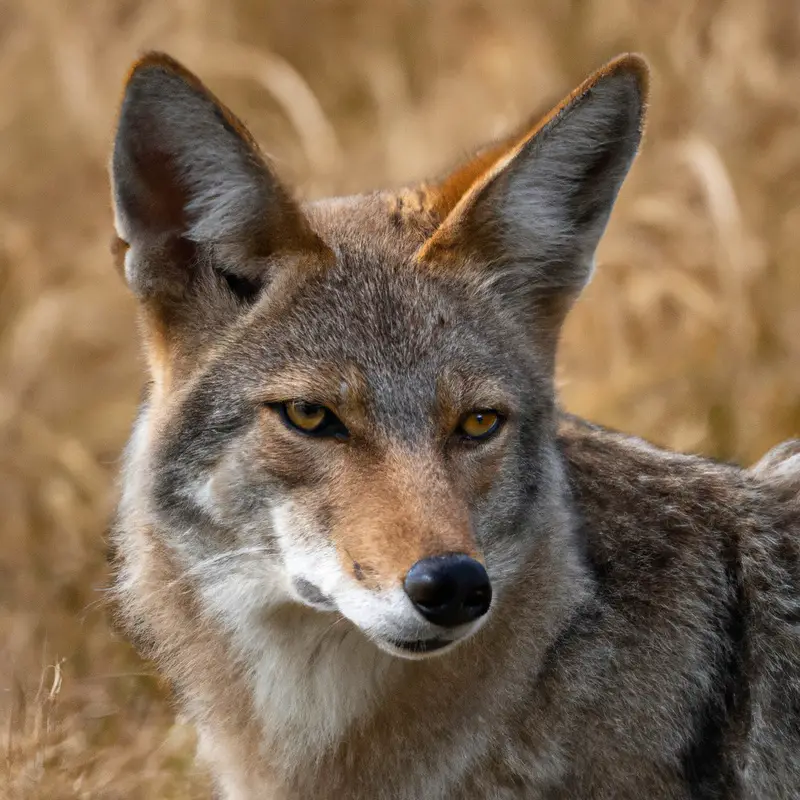
Hunting Regulations and Licenses in Alaska
Alaska Hunting Regulations for Coyote
Alaska’s hunting regulations for coyote are fairly straightforward.
To hunt coyotes in Alaska, you need a valid Alaska hunting license, which can be obtained online or through a licensed vendor.
There are no specific tags or permits required for coyote hunting.
However, it’s important to check the specific dates and bag limits for coyotes in the area where you plan to hunt, as these may vary depending on location.
Additionally, remember to follow all firearm safety regulations and be aware of any private land restrictions before embarking on your coyote hunting adventure in Alaska.
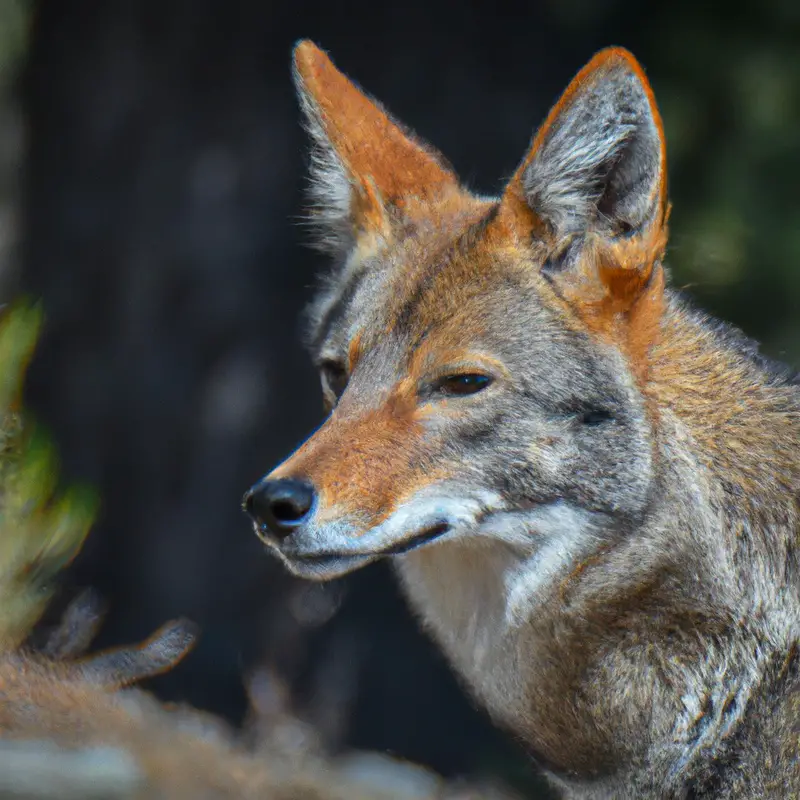
Required License and Permits for Hunting Coyote in Alaska
To legally hunt coyotes in Alaska, you are required to have both a hunting license and a trapping license. The hunting license can be obtained from the Alaska Department of Fish and Game (ADF&G) while the trapping license is issued by the Alaska Board of Game.
It’s important to ensure that your licenses are up to date and valid before engaging in any hunting activities.
Additionally, it’s always a good idea to familiarize yourself with the specific regulations for coyote hunting in your region to ensure you are in compliance with all rules and restrictions.
Seasonal Restrictions for Coyote Hunting in Alaska
In Alaska, there are seasonal restrictions for coyote hunting. From May 1 to August 9, coyote hunting is prohibited in Game Management Units 9B, 17, and 19D.
In Unit 19D, the prohibition extends to April 14.
Outside of these restricted seasons, coyote hunting is allowed. It’s important to check the specific regulations and seasons for the area where you plan to hunt.
Always make sure to adhere to the hunting regulations and obtain the necessary licenses and permits before heading out.
Stay safe and happy hunting!
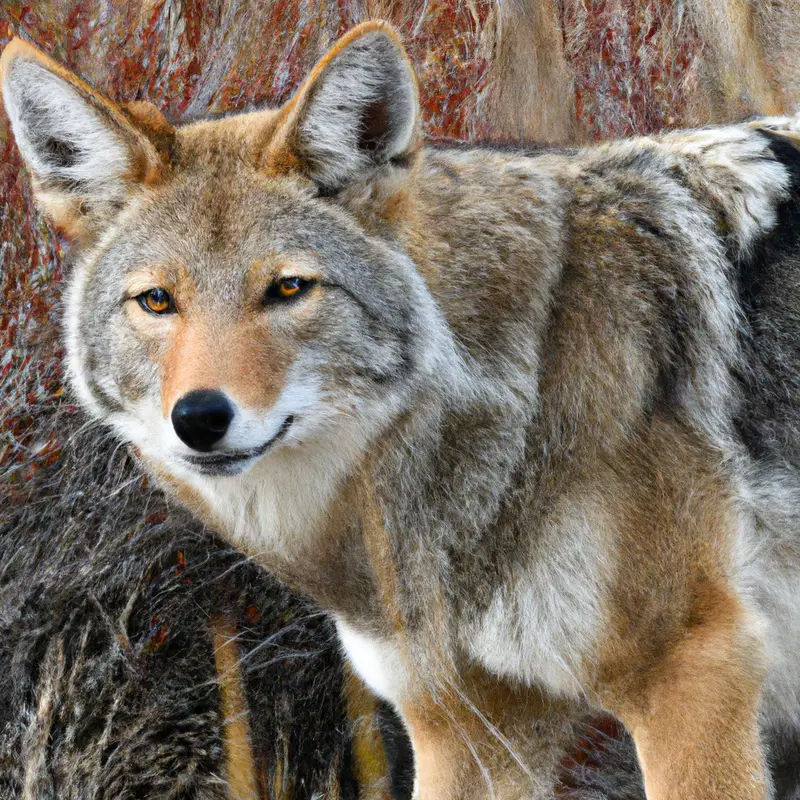
Essential Gear for Coyote Hunting in Alaska
Firearms and Ammunition for Coyote Hunting
When it comes to coyote hunting in Alaska, having the right firearms and ammunition is essential. You’ll want a rifle that is accurate, reliable, and powerful enough to take down a coyote at various distances.
Opt for a caliber like .223 Remington or .243 Winchester, which offer a good balance of speed, accuracy, and terminal performance.
Additionally, consider using expanding bullets like hollow points or soft points, as they can deliver rapid, humane kills. Remember to comply with local laws and regulations regarding firearm and ammunition types.
Optics and Scopes for Coyote Hunting
When hunting coyotes in Alaska, having the right optics and scopes is essential for a successful outing.
A good quality scope with a magnification of at least 10x will allow you to accurately spot and locate coyotes from a distance.
Additionally, investing in binoculars with a wide field of view and high-quality lenses will help you scan the terrain and spot any movement.
The key is to choose optics that provide clarity and durability, ensuring you can track and take down coyotes effectively.
Clothing and Accessories for Coyote Hunting in Alaska
When you’re hunting coyotes in Alaska, it’s important to have the right clothing and accessories to ensure your comfort and success in the field.
Here are some essential items:
- Layered Clothing: Dressing in layers allows you to adjust your insulation as the temperature changes throughout the day. Start with a moisture-wicking base layer, add a insulating mid-layer, and top it off with a waterproof and windproof outer layer.
- Insulated Boots: Alaska’s cold temperatures demand well-insulated boots to keep your feet warm and dry. Look for boots with insulation, a waterproof outer layer, and good traction.
- Gloves and Headgear: You’ll want gloves that offer both warmth and dexterity for handling your gear and shooting. A warm hat or face mask is also crucial for protecting your face and ears from frostbite.
- Camouflage: Coyotes have excellent vision, so a good camouflage pattern that matches your surroundings can help you blend into the environment and increase your chances of success.
- Binoculars and Range Finders: These accessories are vital for spotting coyotes from a distance and accurately judging distances. Invest in a quality pair to enhance your hunting experience.
- Calls and Decoys: Coyotes are attracted to distress calls and decoys, so having these items in your hunting pack can greatly improve your chances of luring them close for a clean shot.
Remember, always check Alaska’s hunting regulations for any additional clothing or gear requirements.
Happy hunting!
Techniques and Strategies for Coyote Hunting in Alaska
Calling Techniques for luring Coyote in Alaska
To lure coyotes in Alaska, calling techniques are essential.
Here are three effective methods to attract them:
- Howling: Mimic the distinct howl of a coyote to grab their attention. Use a coyote howler or mouth-blown howler for a realistic sound. Start with a series of long howls, followed by shorter, more aggressive ones to simulate territorial contests.
- Rabbit Distress Calls: Coyotes are opportunistic predators, and the sound of a distressed rabbit can entice them. Choose a high-quality electronic caller or hand-held mouth call to imitate the injured rabbit’s cries. Vary the pitch and duration to create a convincing distress call.
- Coyote Vocalizations: Utilize coyote vocalizations like barks, yips, and pup distress calls to pique the interest of coyotes. These sounds mimic social interactions and can attract curious coyotes looking for company or a potential meal.
Experiment with different calling techniques, volumes, and cadences to find the combination that works best in your hunting area.
Good luck and happy hunting!
Decoy and Predator Prey Dynamics in Alaska
In Alaska, understanding the dynamics between decoys and predator prey is key. When using a decoy for coyote hunting, it’s important to mimic the movements and behavior of prey animals.
This can attract coyotes who are looking for an easy meal.
Additionally, using decoys that emit distress calls can further enhance their effectiveness. It’s also important to place decoys strategically, taking into consideration wind direction and visibility.
By understanding predator prey dynamics and utilizing decoys effectively, you can increase your chances of a successful coyote hunt in Alaska.
Hunting in Different Terrains and Weather Conditions in Alaska
Alaska offers a diverse range of terrains and weather conditions for hunting.
Whether you’re navigating dense forests, traversing open tundra, or dealing with extreme cold, proper preparation is key.
Equip yourself with appropriate gear, such as insulated clothing and waterproof boots.
Familiarize yourself with the terrain and research the behavior of your target animal.
Adjust your hunting techniques accordingly, whether it’s setting up ambushes in thick cover or glassing open areas.
Stay adaptable and always prioritize safety.
Always check local weather forecasts and be prepared for sudden changes.
Ethical Considerations in Coyote Hunting in Alaska
Safety Measures for Coyote Hunters in Alaska
As a coyote hunter in Alaska, safety should always be your top priority. Here are some essential safety measures to keep in mind:
- Know your target: Before shooting, positively identify the target as a coyote and not a protected or endangered species.
- Be aware of your surroundings: Avoid hunting near homes, roads, or popular recreation areas to minimize the risk of accidents.
- Practice safe firearms handling: Always keep your gun pointed in a safe direction, and never shoot unless you have a clear line of sight.
- Wear appropriate gear: Dress in layers to protect yourself from the cold weather, and wear bright colors to increase visibility.
- Communicate with others: Let someone know where you’ll be hunting and when you expect to return. Bring a cell phone for emergencies.
- Be cautious with traps and snares: If using these methods, ensure they are properly marked to prevent unintentional harm to people or pets.
Practicing Fair Chase Ethics in Coyote Hunting
Practicing fair chase ethics in coyote hunting is important for maintaining a balanced ecosystem and respecting the animals we hunt. Here are some key considerations to keep in mind:
- Respect for the animal: Treat each coyote with dignity and avoid unnecessary suffering. Take ethical shots that ensure a quick and humane kill.
- Legal compliance: Know and abide by the hunting laws and regulations in your area. This helps in conserving the coyote population and preventing overhunting.
- No unfair advantages: Avoid using unfair advantages that make the hunt too easy. This includes using electronic calls or high-powered rifles that could disrupt the balance between predator and prey.
- Minimal disturbance: Try to minimize your impact on the environment while hunting. Respect private property boundaries and be aware of any potential disruption to other wildlife or people in the area.
By practicing fair chase ethics in coyote hunting, you can contribute to the conservation efforts and ensure the sustainability of wildlife populations.
Preserving Alaska’s Wildlife and Ecosystem in Coyote Hunting
Preserving Alaska’s wildlife and ecosystem is a key consideration when hunting coyotes. To ensure the sustainability of the ecosystem, it is important to adhere to ethical practices.
Limiting the number of coyotes harvested, avoiding the targeting of endangered species, and using selective hunting methods can help maintain a balanced ecosystem.
Additionally, promoting habitat conservation and supporting research on coyote populations can aid in preserving Alaska’s unique wildlife and the delicate balance of its natural environment.
Coyote Hunting Experience in Alaska
Tips and Lessons Learned in Coyote Hunting in Alaska
Hunting coyotes in Alaska can be an exciting and challenging experience. Here are a few tips and lessons I’ve learned from my own coyote hunting adventures in Alaska:
- Know the habits and patterns of coyotes in Alaska: Coyotes are known to be adaptable and intelligent animals. Understanding their behaviors, such as their preferred hunting grounds and the time of day they are most active, can greatly increase your chances of success.
- Choose the right camouflage: In Alaska, where the landscape is diverse and challenging, it’s important to have effective camouflage that matches the environment you’ll be hunting in. This will help you blend in and stay hidden from the keen eyes of coyotes.
- Use appropriate calls: Coyotes are highly responsive to calls, and using the right calls can attract them closer to your location. Experiment with different calls, such as howls, distress calls, or pup-in-distress calls, to see what works best in the specific hunting area.
- Stay patient and remain still: Coyotes are cautious and have a keen sense of sight and smell. It’s crucial to stay patient and remain still for long periods of time to increase your chances of spotting and targeting a coyote. Even the slightest movement or noise can scare them away.
- Be prepared for extreme weather conditions: Alaska’s weather can change quickly, so it’s important to dress appropriately and be prepared for cold temperatures, rain, or snow. Make sure to have proper gear, including insulated clothing, waterproof boots, and a reliable firearm.
- Practice ethical hunting: Respect local regulations and practice ethical hunting practices. Always prioritize safety and ensure a clean, humane kill when targeting coyotes.
By keeping these tips in mind and learning from your experiences, you can enhance your coyote hunting skills in the Alaskan wilderness. Happy hunting!
Final Verdict
Hunting coyote in Alaska can be an exhilarating and rewarding experience for those who are prepared and well-informed.
Alaska is home to a thriving coyote population, and understanding their habits and behavior is crucial for a successful hunt.
Following the hunting regulations and obtaining the necessary licenses and permits is essential to ensure a legal and ethical hunt.
Equipping oneself with the right gear, such as firearms, optics, and appropriate clothing, is key to navigating the challenging Alaskan terrain.
Employing effective calling techniques, understanding predator-prey dynamics, and adapting to different weather conditions are all strategies that can enhance one’s chances of a successful coyote hunt.
However, it is crucial to prioritize safety, practice fair chase ethics, and strive to preserve Alaska’s wildlife and ecosystem while engaging in this activity.
Overall, hunting coyote in Alaska offers an opportunity to connect with nature, challenge oneself, and contribute to the conservation efforts of this magnificent state.
